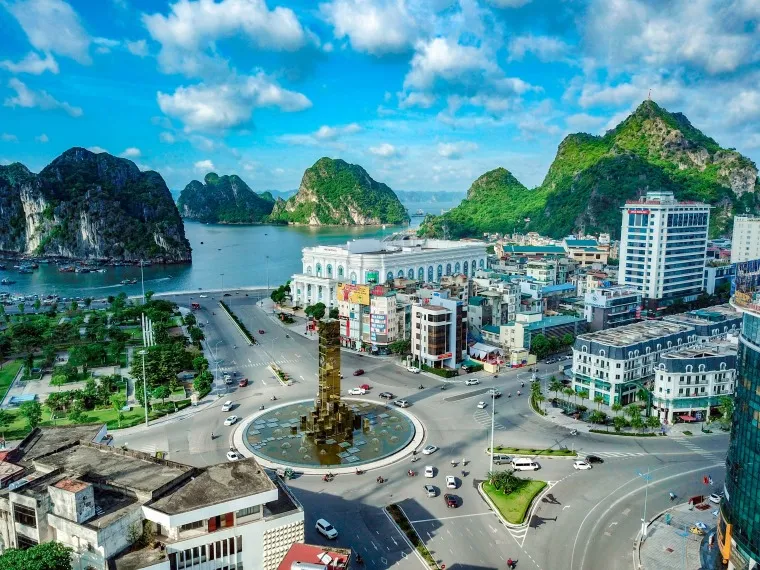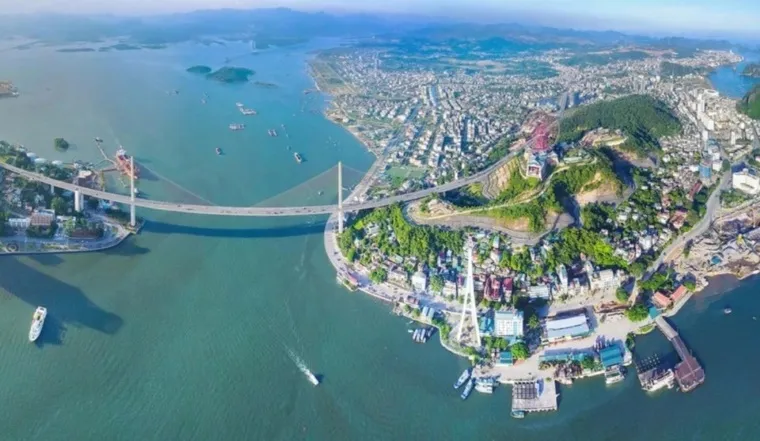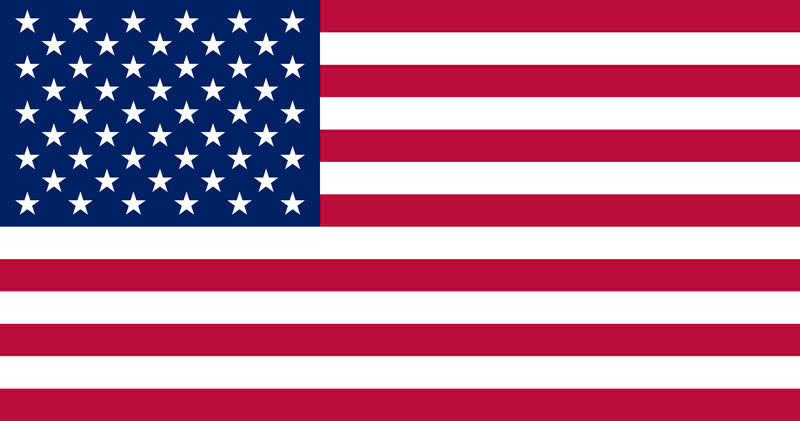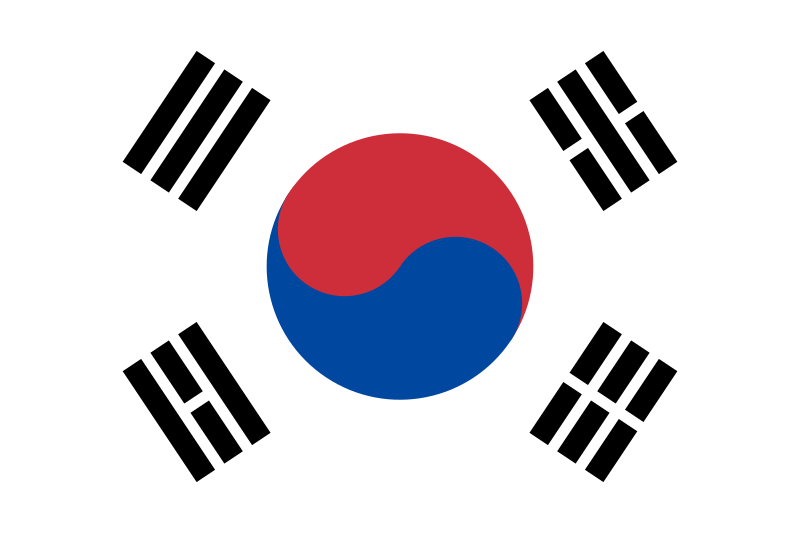Hon Gai Harbour: The Gateway to Bai Tu Long Bay's Untouched Beauty
When travelers think of Halong Bay in Vietnam, images of emerald waters dotted with limestone karsts often come to mind, along with throngs of tourists boarding cruises from the popular Tuan Chau port. However, for those seeking a more authentic and less crowded experience, Hon Gai Harbour presents an exceptional alternative—a gateway to the serene and less-explored Bai Tu Long Bay.
Discovering Hon Gai: The Cultural Heart of Halong City
Halong City is distinctly divided into two main areas: the tourist-oriented Bai Chay district and the more traditional Hon Gai district. While Bai Chay buzzes with entertainment venues and resort developments, Hon Gai retains its status as the cultural, political, and economic center of Halong.

Hon Gai is the cultural and administrative center of Halong, showcasing authentic Vietnamese daily life - Photo Source: Báo Quảng Ninh
Connected by the iconic Bai Chay Bridge spanning across Cua Luc Bay, these two areas offer contrasting experiences. Hon Gai showcases authentic local life with its residential neighborhoods, vibrant markets (particularly its famous seafood market), and administrative buildings, creating an atmosphere that feels genuinely Vietnamese rather than tourist-centric.
Geographically, Hon Gai sits on the northern shore of Halong Bay, near Bai Tho Mountain with magnificent views of the bay. This strategic location has shaped its historical significance and current role as a multi-purpose harbor serving both commercial and tourism functions.
Navigating Hon Gai's Harbor Facilities: A Traveler's Guide
The term "Hon Gai Harbour" can be confusing as it encompasses several distinct port facilities within the same general area. For travelers, understanding these differences is crucial:
Hon Gai Port (General/Traditional)
This refers to the comprehensive national seaport serving as a regional hub. The port handles bulk and general cargo (cement, coal, consumer goods) while also featuring docks for tourist boats, including international vessels visiting Halong Bay. Tourism infrastructure here is relatively well-developed with basic logistics services (fuel supply, clean water, minor repairs). This may be the departure point for Bai Tu Long Bay cruises.
Hon Gai International Passenger Port
This is a modern, specialized facility developed through a public-private partnership between Sun Group and Quang Ninh Province. Operating since November 2018, this port is specifically designed to welcome large international cruise ships (up to 225,000 GT, accommodating 6,500-8,400 passengers). Facilities include a long pier (524m), a modern three-story passenger terminal (total floor area of 13,500 m²), and an access bridge (785m). The port is located near the Sun World complex on the Bai Chay side of Cua Luc River and is sometimes referred to as Halong International Passenger Terminal.

Hon Gai includes multiple port facilities, each serving different tourism and commercial functions, requiring careful navigation by travelers - Photo Source: Báo Quảng Ninh
Hon Gai Passenger Port (Vinashin)
This older project was taken over by the Vietnam Shipbuilding Industry Group (Vinashin) in 2006 for upgrades, aiming to serve the North-South high-speed transport route. Phase 1 was invested (over 100 billion VND) and the port operated briefly from August 2007. However, the project appears to have been abandoned, with deteriorating facilities now being used for other purposes (restaurants, swimming). Its relationship to the current Hon Gai Port serving Bai Tu Long Bay trips is unclear but seems distinct from the new International Passenger Port.
Hon Gai Fishing Port
This is a planned or under-construction project in the Cai Xa Cong area of Ha Phong ward. It aims to serve local fishermen, provide fishing logistics services (fuel, ice, boat repairs), serve as a storm shelter, and potentially develop fishing village tourism. This port is entirely separate from passenger ports.
Hon Gai Seafood Market
A vibrant traditional market, primarily outdoors, located near Hon Gai port and Bai Tho Mountain. This is where fishermen directly sell freshly caught seafood, particularly bustling in early mornings (6-9 AM). The market serves not only as a commercial space but also as a cultural exchange point and tourist attraction, situated across from Vincom Plaza Halong.
The existence of multiple facilities with similar names requires travelers to be extremely careful when identifying their destination or departure point in Hon Gai. Going to the wrong port (for example, arriving at the International Passenger Port to board a wooden junk to Bai Tu Long, or vice versa) is entirely possible without accurate information from service providers.
Hon Gai Harbour's Current Role: Gateway to Untouched Beauty
Today, Hon Gai Harbour serves multiple interconnected roles:
Tourism Gateway
Its most prominent role is as the main departure point for cruises exploring Bai Tu Long Bay. Additionally, Hon Gai International Passenger Port serves as a reception point for large international cruise ships visiting Halong Bay and other tourist spots in Quang Ninh.
Commercial Port
It continues cargo handling operations, including bulk goods like cement and potentially coal, though the focus may be shifting. The port also supports fishing activities (with the dedicated fishing port project underway) and seafood commerce through the Hon Gai Seafood Market.

Hon Gai Harbour functions as both a tourism hub for Bai Tu Long Bay and a center for local commerce and logistics - Photo Source: Báo Quảng Ninh
Local Life Center
Hon Gai remains the center of everyday life with its markets, cultural landmarks, and residential areas. It also serves as a cultural exchange point between locals and tourists.
Logistics and Support
The port provides essential maritime services such as fuel, clean water, minor repairs, storage, and logistics, particularly for tourist boats and possibly cargo vessels.
Hon Gai Harbour operates with a dual identity: on one hand, a modern gateway for mass international tourism (via the International Passenger Port); on the other, a more traditional center for local commerce (seafood market, small goods) and specialized tourism (Bai Tu Long Bay boats). This duality creates a unique atmosphere that may be more diverse and connected to local life than purely tourist ports like Tuan Chau.
Other Maritime Activities at Hon Gai
Hon Gai remains a center for fishing activities, evidenced by the bustling seafood market and plans for a dedicated fishing port with support services. However, there are also issues such as illegal fishing in the core area of Halong Bay, requiring intervention from authorities like the Border Guard Station of Hon Gai Port.
As mentioned earlier, the port continues to handle various types of cargo. Additionally, "Hon Gai Passenger Terminal" is mentioned as transporting passengers from North to South, though the context is not entirely clear—possibly referring to coastal routes rather than just intra-bay transport. In general, maritime activities remain frequent in the area.
Despite the strong push toward tourism, traditional maritime activities like fishing and cargo transportation persist in Hon Gai. This contributes to the area's character but may also create operational overlap or potential conflicts (for example, managing fishing vessels versus tourist boats). This mixture shapes Hon Gai's identity but requires careful management from authorities (such as Quang Ninh Maritime Port Authority) to ensure safety and efficiency for all port users.
Infrastructure and Amenities for Travelers
Modern Hon Gai International Passenger Port: Facility Overview
The Hon Gai International Passenger Port is a modern facility with comprehensively invested infrastructure:
-
Passenger Terminal: A large, 3-story building (total floor area of 13,500 m² or construction area of 7,600 m²), designed with modern and luxurious elements to facilitate passenger processing and provide services. The port meets international standards and likely includes waiting areas, customs/immigration procedures (implied from its "international" function), and possibly shops or cafes (though not detailed).
-
Pier/Dock: A long pier (524m or 920m according to some sources) capable of simultaneously accommodating two large cruise ships. Includes floating dock/yacht marina.
-
Access Bridge: A long bridge (785m) connecting the terminal/pier to the mainland.
Support Infrastructure: Includes official buildings for functional agencies, vehicle turning area, lighting system, and traffic safety features. Utility items continue to be under construction. -
Location: Situated near the Sun World entertainment complex, facilitating access to nearby recreational amenities, though details about integration are not provided.

Hon Gai offers a range of traveler facilities, from modern cruise terminals to local markets and basic boat support services - Photo Source: Báo Quảng Ninh
General Port Area: Available Services and Amenities
For the general Hon Gai port area (outside the International Passenger Port), services and amenities may include:
-
Tourism Services: Hon Gai Port provides basic services such as ticket sales (implied), waiting areas (implied), possibly information counters (not specified but common), and basic logistics for tourists.
-
Vessel Support Services: Services available include fuel supply, fresh water, maintenance/minor repairs for tourist boats.
-
Nearby Commercial Services: The Hon Gai area has Vincom Plaza Halong Shopping Center, Hon Gai Seafood Market, cafes with beautiful views, and many local restaurants and shops.
-
Infrastructure Quality: While the new International Passenger Port is very modern, the old Vinashin port project is neglected and deteriorating. The specific infrastructure condition for Bai Tu Long Bay departure points is not described in detail but may be less developed than the International Passenger Port or Tuan Chau Port. The planned Hon Gai Fishing Port aims to provide comprehensive logistics services (fuel, ice, repairs). In general, Quang Ninh Province is prioritizing investment in transportation and port infrastructure.
Accessibility and Local Transportation in Hon Gai
Hon Gai has relatively good transport connectivity:
-
Road: Direct connection to Bai Chay via Bai Chay Bridge. Modern highways connect Halong with Hanoi (approximately 1.5-3 hours depending on transport and route) and Hai Phong.
-
Local Transportation: Taxis are common with several companies operating (Mai Linh, Hon Gai Taxi, Bai Chay Taxi...). Ride-hailing apps like Grab may be an option. Electric vehicles are mentioned for the Bai Chay area, unclear if available in Hon Gai. Motorbike/bicycle rental services may be available at hotels or tourism companies.
-
Port Access: Moving to specific piers in Hon Gai from other areas of Halong (such as Bai Chay bus station or Tuan Chau island) requires using local transport like taxis or motorbike taxis. The distance between Hon Gai and Tuan Chau is about 18 km, while Tuan Chau Port is about 12.5 km from Halong City center.
Hon Gai's Place in the Halong Tourism Ecosystem
Connections: Links with Bai Chay, Tuan Chau, and the Broader Halong Area
Hon Gai Harbour has physical and transportation links with nearby areas:
-
Physical Links: Bai Chay Bridge connects Hon Gai with the Bai Chay area.
-
Transportation Links: Taxis connect Hon Gai with other areas such as Tuan Chau (about 22 minutes driving, 18km) and Bai Chay. Buses connect Halong (usually Bai Chay bus station) with Hanoi and Hai Phong. Seaplanes land at Tuan Chau, requiring onward travel to Hon Gai. Ferries connect Cat Ba with Tuan Chau Island, from where road travel to Hon Gai is possible. Van Don International Airport (VDO) is about 50km away, requiring taxi/shuttle. Cat Bi Airport (HPH) in Hai Phong is also an option.

Hon Gai complements Halong’s broader tourism scene, linking to nearby hubs and offering a distinctive cultural and natural experience - Photo Source: Báo Dân Trí
Attractions in Hon Gai: Beyond the Port Area
The Hon Gai area itself boasts several notable attractions:
-
Cultural/Historical: Bai Tho Mountain with poems carved on rocks, Hon Gai Church (rebuilt), Long Tien Pagoda, Quang Ninh Museum (unique architecture, diverse exhibits on nature, history, mining), and Duc Ong Tran Quoc Nghien Temple.
-
Commercial/Entertainment: Hon Gai Seafood Market, Vincom Plaza Halong (shopping, entertainment), cafes, and local restaurants.
-
Nature/Recreation: Hon Gai Beach (artificial beach, major investment, opened in 2021).
Beyond its function as a seaport, Hon Gai is a cluster of cultural, commercial, and recreational attractions. This makes the area worth exploring for tourists, especially those interested in local culture, history, or specific sites like the Quang Ninh Museum. Travelers departing from Hon Gai or staying nearby might allocate additional time (perhaps half a day) to explore these attractions.
Practical Recommendations for Visitors to Hon Gai Harbour
Key Considerations When Choosing to Depart from Hon Gai
-
Main Reason: Choose Hon Gai if your primary goal is to explore Bai Tu Long Bay, seeking a more pristine natural experience with fewer crowds.
-
Vessel Type: Departures from Hon Gai (excluding the International Passenger Port) seem to feature more traditional wooden boats and smaller boutique cruises, potentially offering a more intimate experience.
-
Logistics: Prepare for potential ambiguity about the exact departure pier – carefully confirm with tour operators. Calculate time and cost for internal transportation to reach the correct pier from your accommodation or arrival points like Bai Chay bus station or Tuan Chau.
-
Atmosphere: Expect a more "local" atmosphere at the general port area compared to tourism centers like Tuan Chau or Bai Chay.
-
International Cruises: If you're arriving on a large international cruise ship, Hon Gai International Passenger Port will be your designated arrival/departure point, with modern facilities.
Travelers should carefully plan logistics, identify the correct port, and explore Hon Gai for a richer experience - Photo Source: Báo Dân Trí
Practical Advice for Visiting Hon Gai Harbour
-
Clearly Identify the Port: Always confirm the exact name and location of the port/pier for your specific trip or activity (International Passenger Port vs. general port area vs. Seafood Market area).
-
Budget Travel Time: Allow sufficient time for travel by taxi or other local transport to reach your specific destination in Hon Gai from your hotel or arrival point in Halong.
-
Explore Hon Gai: Consider allocating extra time to explore nearby attractions such as Quang Ninh Museum, Bai Tho Mountain, or Hon Gai Seafood Market (especially in early morning) for a more complete experience.
-
Cash for the Market: Likely need cash (VND) for purchases at Hon Gai Seafood Market.
-
Check Included Services: Verify what's included in Bai Tu Long Bay cruise packages (transfers from Hanoi, meals, activities like kayaking, entrance fees).
Conclusion
Hon Gai Harbour is a key gateway to Bai Tu Long Bay, offering a quieter alternative to the bustling Halong Bay. The modern Hon Gai International Passenger Port, developed by Sun Group, welcomes international cruise ships, boosting local tourism. However, travelers should be aware of the various port areas—ranging from the international terminal to piers for Bai Tu Long cruises, traditional seafood markets, and a future fishing port
For travelers seeking a different, quieter, and potentially more intimate Halong Bay experience, choosing a cruise departing from Hon Gai to explore Bai Tu Long Bay is an attractive option. The Hon Gai area also offers opportunities to discover local cultural and historical values through attractions such as Quang Ninh Museum and Bai Tho Mountain.
|
Joytime Travel Agency - Travel JOY, TIMEless Vietnam Follow us for travel tips, local insights, and exclusive offers:
|

Danish Nguyen
Danish Nguyen is a renowned travel blogger in Vietnam with over 5 years of experience sharing unique travel experiences. With a passion for exploring new places, Danish captures incredible moments and provides readers with valuable tips to discover the beauty of his homeland.









.webp)
.webp)








